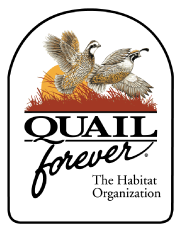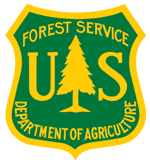Projects RSS
by
Web Editor
—
last modified
Jul 03, 2013 03:21 PM
- U.S. Fish & Wildlife Service Gopher Tortoise — by Web Editor — last modified May 15, 2025 03:36 PM
- The gopher tortoise is a large burrowing tortoise that occurs in upland pine forests of the southeastern United States. The gopher tortoise is one of five tortoise species native to North America and the only tortoise species east of the Mississippi River. The sex of individual tortoises can usually be determined by shell dimensions. A male tortoise has a greater degree of lower shell concavity, and a longer gular projection. However, the sex of tortoises at maturity size is difficult to determine (U.S. Fish and Wildlife Service 1990).
- Background Materials: Climate Change Vulnerability in the Appalachians — by Web Editor — last modified May 14, 2025 10:32 PM
- Phase I: Alternatives for Climate Change Vulnerability Assessment: Expert Panel Findings PDF — by Web Editor — last modified May 14, 2025 10:24 PM
- How should the Appalachian LCC acquire information about species and habitat vulnerability to large-scale impacts in the Appalachians? This report summarizes the findings and recommendations of a seven-member Expert Panel that sought to answer this question identified as a major research priority. The Panel addressed three aspects of the question: the selection of species and habitats to assess, approaches to vulnerability assessment, and the availability of downscaled climate data.
- Classification and Mapping of Cave and Karst Resources — by Matthew Cimitile — last modified May 14, 2025 07:56 PM
- Cave and karst systems are unique environments that occur throughout the Appalachians. They provide habitat for a diverse array of species and are an important source of domestic water supply for Appalachian communities. However, a lack of classification and mapping information on these ecosystems creates a significant barrier to conservation.
- Products — by Tab Manager — last modified Nov 30, 2022 01:59 PM
- Project Search — by Web Editor — last modified Nov 30, 2022 01:58 PM
- North Atlantic Aquatic Connectivity Collaborative — by abstract — last modified Oct 28, 2022 12:54 PM
- This project is developing a partner-driven, science-based approach for identifying and prioritizing culvert road stream crossings in the area impacted by Hurricane Sandy for increasing resilience to future floods while improving aquatic connectivity for fish passage. The resulting information and tools will be used to inform and improve decision making by towns, states and other key decision makers.
- The Literature Gateway Project — by Web Editor — last modified Oct 28, 2022 12:53 PM
- Forest management affects wildlife habitat by altering the structure and composition of vegetation communities. Every wildlife species uses a specific set of resources associated with different species and ages of forest trees (e.g., nesting cavities, den sites, acorn crops, fruit resources) to survive and reproduce. Forest managers, wildlife conservation groups, policy makers, and other stakeholders often need to review the literature on forest bird-vegetation relationships to inform decisions on natural resource management or ecosystem restoration. The literature gateway facilitates the exploration of this literature, helping users find references on a diverse range of management-relevant topics that have been compiled by subject experts based on searches of >60 different sources spanning the past 50+ years.
- Alarka Headwaters habitat connectivity and sediment reduction project — by Web Editor — last modified Oct 25, 2022 09:47 PM
- This project is Phase I of a three-phased connectivity and sediment reduction project, with Phases II and III in years two – four involving replacement of two fords with AOP structures, graveled road improvements that reduce sedimentation, and a spruce bog restoration.
- Salt marsh Habitat and Avian Research Program (SHARP) — by abstract — last modified Oct 25, 2022 09:45 PM
- A collaborative effort to assess risks and set response priorities for tidal-marsh dependent bird species from Virginia to maritime Canada.
- Camp Wiahkowi Dam Removal — by Web Editor — last modified Sep 19, 2022 12:00 AM
- The Friends of the Winooski River completed the removal of Camp Wihakowi Dam (Vermont) in 2020.
- Integrating Cultural Resource Preservation at a Landscape Scale — by Matthew Cimitile — last modified Jun 29, 2022 09:09 PM
- A collaborative research project sponsored by the National Park Service and the Appalachian LCC seeks to integrate cultural resources, such as historic bridges and Civil War Battlefields, into landscape conservation planning and design to emphasize both natural and cultural resources in defining conservation priorities.
- iPlover: Piping plover habitat suitability in a changing climate — by abstract — last modified Jun 17, 2022 10:36 PM
- Designed by scientists to simplify consistent data collection and management, the iPlover smartphone application gives trained resource managers an easy-to-use platform where they can collect and share data about coastal habitat utilization across a diverse community of field technicians, scientists, and managers. With the click of a button, users can contribute biological and geomorphological data to regional models designed to forecast the habitat outlook for piping plover, and other species that depend upon sandy beach habitat.
- Environmental Flows from Water Withdrawals in the Marcellus Shale Region — by Web Editor — last modified Mar 11, 2022 03:43 PM
- The rivers and streams of the Central Appalachians are home to more than 200 species of fish and other aquatic life. They also provide a reliable source of drinking water, recreational opportunities and associated economic benefits to people living in large cities and surrounding communities. Stream Impacts from Water Withdrawals in the Marcellus Shale Region
- Assessing Vulnerability of Species and Habitats to Large-scale Impacts: CCVA — by Rosanne Hessmiller — last modified Mar 29, 2021 08:04 PM
- New vulnerability assessments for 41 species and 3 habitats in the Appalachians are now available. The conservation community can view and search each of these assessments by relative raking or vulnerability scores, conservation status ranks, state and subregion of assessment, and higher taxonomy. In addition, principle investigators NaturServe compiled the results of 700 species assessments previously completed by other researchers as well as assessments on several habitats.
- Vernal Pool Mapping and Conservation — by abstract — last modified Sep 22, 2020 10:48 PM
- Vernal pools are small, temporary bodies of water that can serve as critical habitat for frogs, salamanders, reptiles, invertebrates, and other species. This project compiled a comprehensive GIS dataset of known and potential vernal pool locations in the North Atlantic region, reviewing vernal pool mapping approaches, and demonstrating a remote sensing method to identify potential vernal pool sites.
- Stream Temperature Inventory and Mapper — by abstract — last modified Sep 22, 2020 10:47 PM
- This project developed a coordinated, multi-agency regional stream temperature framework and database for New England, the Mid-Atlantic, and the Great Lakes states. The project compiled metadata about existing stream temperature monitoring locations and networks; developed a web-based decision support mapper to display, integrate, and share that information; built a community of contacts with interest in this effort; and developed data portal capabilities that integrate stream temperature data from several sources.
- Development of a Rapid Assessment Protocol for Aquatic Passability of Tidally Influenced Road-Stream Crossings — by abstract — last modified Sep 22, 2020 10:44 PM
- There is growing interest among conservation practitioners to have a method to assess tidally influenced crossings for their potential as barriers to aquatic organism passage. Protocols designed for freshwater streams will not adequately address the passage challenges of bi-directional flow and widely variable depth and velocity of tidally influenced systems. Diadromous and coastal fish must be able to overcome the enhanced water velocities associated with tidal restrictions to reach upstream spawning habitat. This project will build on the existing North Atlantic Aquatic Connectivity Collaborative's protocol, database and scoring procedures to extend the applicability of this region-wide program to road-stream crossings in tidally influenced settings.
- Salt marsh modeling coupled with hydrodynamic modeling — by abstract — last modified Sep 22, 2020 10:36 PM
- Combining marsh equilibrium modeling approach with a hydrodynamic modeling approach, this coupled model forecasts the evolution of marsh landscapes under different sea-level rise scenarios, with or without marsh restoration and storm surge factored in, to inform future management decisions with regard to system dynamics.
- Piping Plovers and Sea-level Rise — by abstract — last modified Sep 22, 2020 10:35 PM
- This collaborative project provided biologists and managers along the Atlantic coast with tools to predict effects of accelerating sea-level rise on the distribution of piping plover breeding habitat, test those predictions, and feed results back into the modeling framework to improve predictive capabilities. Immediate model results will be used to inform a coast-wide assessment of threats from sea-level rise and related habitat conservation recommendations that can be implemented by land managers and inform recommendations to regulators. Case studies incorporating resilience of piping plover habitat into management plans for specific locations demonstrate potential applications.


























